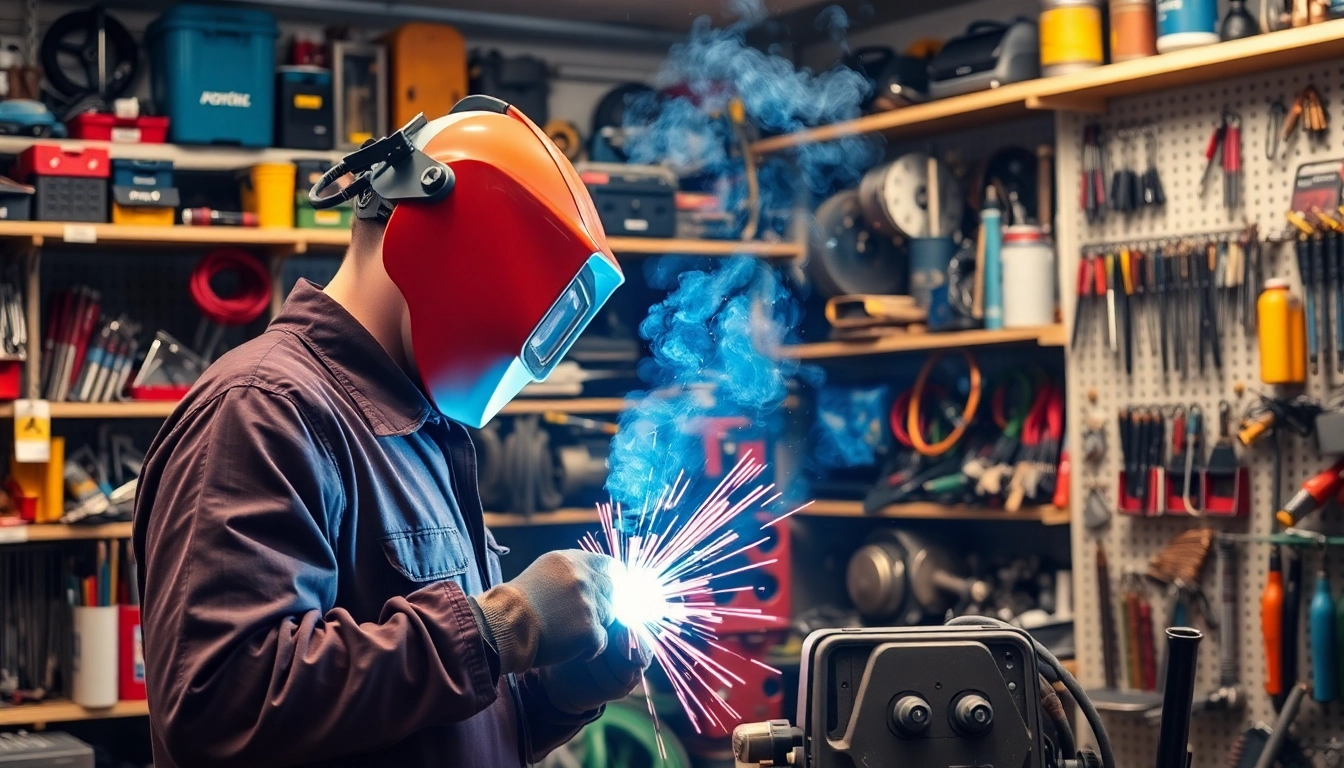Understanding Your Welding Needs
When embarking on any welding project, understanding your specific welding needs is the first step toward successful execution. Knowing the right tools, materials, and techniques is crucial for achieving high-quality welds. For anyone searching for welding supplies near me, it’s essential to have a clear idea of what you require before making a purchase. In this article, we’ll delve into the various types of welding supplies, the techniques commonly employed, and how to assess your individual project parameters.
Types of Welding Supplies
Every welding job requires specific supplies tailored to the type of welding being executed. Here are the primary categories of welding supplies you should be familiar with:
- Welders: The most critical piece of equipment for any welder. Options include MIG, TIG, and Stick welders, each suited for different applications.
- Welding Wire and Rods: Essential for the welding process, different projects require different materials, such as solid wire for MIG welding or electrodes for Stick welding.
- Gas Supplies: Gas is necessary for processes like MIG welding where shielding gas protects the weld area from contamination.
- Personal Protective Equipment (PPE): Safety gear like welding helmets, gloves, and clothing to protect against sparks, heat, and hazardous fumes.
- Welding Accessories: Tools and supplies such as clamps, grinders, and brushes that help improve the welding process.
Common Welding Techniques
Understanding the various welding techniques can help you choose the right supplies. Some of the most common types include:
- MIG Welding: Ideal for beginners, MIG welding uses a continuous wire feed to weld metals. It’s fast and versatile, making it suitable for various projects.
- TIG Welding: This technique offers high precision and control, perfect for intricate projects. It requires more skill and practice, as the welder must manually feed the filler rod.
- Stick Welding: One of the oldest welding methods, suitable for outdoor use and thicker materials. Though less commonly used for delicate work, it’s robust and reliable.
Assessing Your Project Requirements
Before purchasing supplies, it’s essential to assess your project requirements. Consider factors such as:
- Material Types: Different metals and alloys require specific welding techniques and materials.
- Thickness of Materials: Thicker materials may require stronger welds, influencing the choice of welder and filler materials.
- Working Environment: Will your work be indoors or outdoors? The conditions can affect your choice of supplies and equipment.
Where to Find Welding Supplies Near Me
Once you have a clear understanding of your welding needs, the next step is finding supplies. Here are various sources to consider:
Local Retailers and Their Offerings
Local hardware stores and specialty welding supply shops are great starting points. Stores like Home Depot and Lowe’s often carry a robust selection of welding supplies including tools and personal protective equipment. They also typically have knowledgeable staff who can assist you in making the right choice for your project.
Online vs. In-Store Shopping
While local retailers offer the advantage of immediate access, online shopping can greatly expand your options. Websites such as Amazon and dedicated welding suppliers often have extensive inventories and competitive pricing. Make sure to compare both methods, as sometimes local stores offer same-day pickup services that online platforms cannot match.
Comparing Prices and Quality
Quality is paramount when it comes to welding supplies. Always compare prices between different suppliers and read reviews related to the products you’re considering. Investing in high-quality equipment can prevent issues down the line, ensuring your welding projects run smoothly.
Best Practices for Selecting Supplies
Choosing the right welding supplies can significantly impact the quality of your work. Here are best practices to ensure you make informed purchases:
Choosing the Right Equipment for Your Needs
Determining the right welder for your needs is crucial. New welders may benefit from a MIG welder due to its ease of use, while experienced welders might find TIG welding more suitable for precision work. Take the type and thickness of materials you plan to weld into account when making this decision.
Safety Gear Essentials
Safety should always be a priority in any welding project. Essential safety gear includes:
- Welding Helmet: Protects your face and eyes from harmful UV rays and sparks.
- Gloves: Provides hand protection from heat and sparks; choose gloves specifically designed for welding.
- Protective Clothing: Flame-resistant garments that cover exposed skin are crucial.
Understanding Certification and Standards
Familiarize yourself with the certifications and standards relevant to your welding projects. Equipment and materials should ideally meet the American Welding Society (AWS) standards, ensuring safety and reliability in your work.
Customer Support and After-Sales Services
When investing in welding supplies, consider the level of support and service provided by retailers. This can be crucial, especially for beginners.
Warranty and Return Policies
Verify warranty information on your purchased welding supplies. A strong warranty indicates the manufacturer’s confidence in their product, while flexible return policies provide peace of mind for potential issues that may arise.
Getting Help from Local Experts
Many local welding supply stores offer consultations and advice. These experts can guide you in selecting the right supplies for your specific needs, and often provide workshops or training sessions for both beginners and seasoned welders alike.
Community Workshops and Classes
Check with local community colleges or adult education centers for welding classes. Learning from experienced trainers not only boosts your skills but can also introduce you to expert welding techniques.
Enhancing Your Skills as a Welder
Beyond acquiring tools and supplies, continuous skill development is essential in welding. There are numerous resources available to help aspiring and seasoned welders improve their techniques.
Resources for Learning Welding Techniques
Consider online courses, welding forums, instructional videos, and books. These resources can provide insights into advanced techniques, safety practices, and troubleshooting methods.
Tips for Beginners to Improve Skills
For beginners, practice is critical. Start with simple projects to build confidence, gradually advancing to more complex tasks. Investing time in practicing techniques will lead to improved precision and outcomes.
Finding Mentorship and Networking Opportunities
Joining a local welding group or association can yield valuable networking opportunities. Engaging with fellow welders can provide feedback, mentorship, and collaborative opportunities that foster growth and learning.



